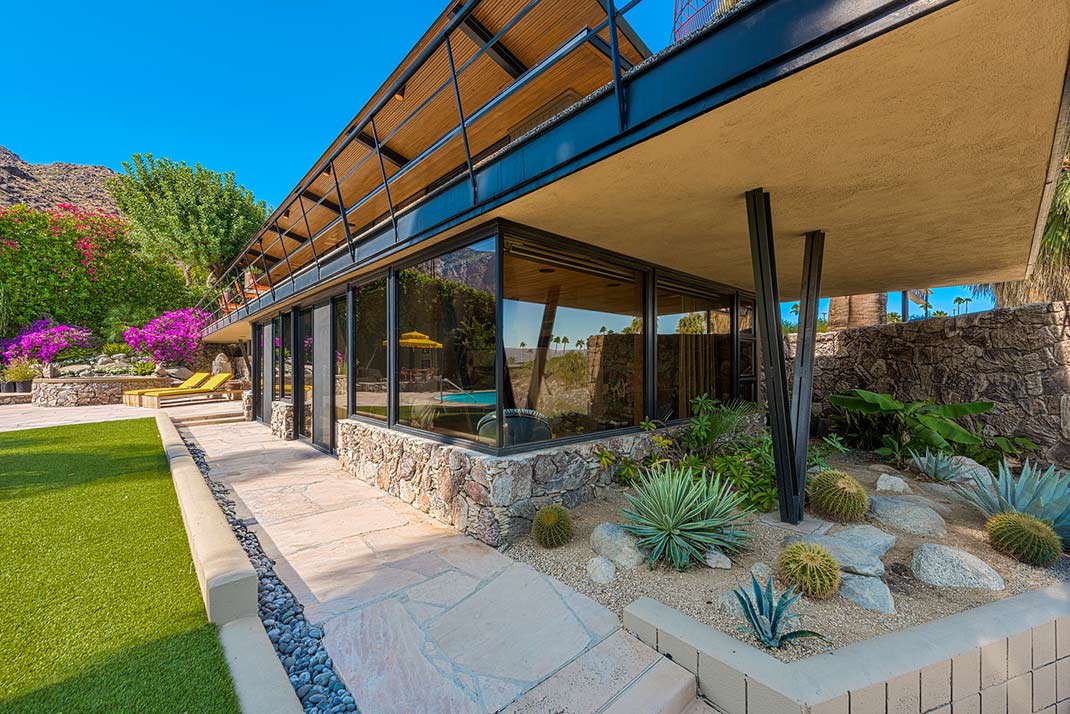Palm Springs International Jazz Festival
VIP ALL ACCESS 2026
VIP ALL ACCESS 2026
- All 6 Shows 4 Days February 19 - 22, 2025
- Sunset Jazz Kickoff Party 4:30 - 7:30 pm
- Franz Alexander House
Couldn't load pickup availability
INCLUDES:
- Four Days
- Six Exciting Performances
- Three Unique Venues
- Reserved VIP section - Front Orchestra for all 6 shows
- Sunset Jazz Party at the Franz Alexander House
- Jazz Fest swag
Share

VIP TICKETS: Includes All Six Performances
Friday - Sunday, February 19-22, 2026 - Plus Sunset Jazz Party Included

Jazz Party
The Palm Springs International Jazz Festival kicks off with a special invitation to the swankiest of parties at the inimitable Franz Alexander House. Dr. Alexander was a prominent German psychiatrist in the mid-20th century.
Designed in 1955 by ground-breaking architect and industrial designer Walter S. White. The Alexander House, appears to emerge from the boulders and the rocky mountains it embraces. Seamlessly integrating into the natural surrounds.
Tour the house for a luxe cocktail party befitting the best
of the midcentury. Live music, decadent hors d’oevres in architectural splendor.
Dr. Franz Alexander House
-

Dramatic Architectural Elements
Midcentury craftmanship like the V-shaped steel supports, tongue and groove ceiling. Stonework from local "lava rock" incorporated throughout the property.
-

Hors d'oeuvres and open bar cocktails
Dine on decadent hors d'oeuvres and sip some libations as you soar over Palm Springs and experience the speical spirit the desert offers.
-

Music and Mountains
Listen to live Jazz provided by the Lance Conrad Quartet as you explore this private and prized Little Tuscany neighborhood.
-

National Register of Historical Places
The supremely modern and unique house perched on the rocky mountainside overlooking the valley below is extraordinary.
-

Whimsical Outdoor Setting
This extraordinary avant-garde house, now listed on the National Register reflected life in dreamy Palm Springs in the 1950s and 60s.
-

Carefully curated midcentury interior design
Photo credits: Patrick Ketchum
Thank you Patrick for the beautiful photography offering a sneak peek.
Sunset Jazz provided by the Lance Conrad Quartet
-

Listen to soothing live Jazz provided by the Lance Conrad Quartet.
The divine desert architecture of Walter S. White
White learned how to build from his father, who owned a construction business in San Bernardino, California; honed his technical skills in a Southern California airplane factory during World War II; and worked in the offices of noted architects Rudolf M. Schindler, Harwell Hamilton Harris, and Albert Frey. By the mid-1940s White was a designer, builder, and developer to the growing number of desert dwellers in California’s Coachella Valley.

Walter S. White - circa 1950s
White’s concern for the local landscape and the earth’s environment led him to design buildings that took advantage of their natural settings while also caring for nature and sitting lightly on the land. He freed the roof from the plan, creating complex shapes that captured light and cross ventilation, and maximized views while providing shelter. His expressive roofs became a signature of his work. The Alexander, Bates, and Willcockson houses are among his most significant buildings because of their innovative roof structures.
© courtesty of AD&A Museum UC Santa Barbara
-

Franz Alexander House (1955)
As did many young designers in this period, White experimented with plans that “opened the box, ”influenced by Frank Lloyd Wright and other forms of modernism. White's meticulous detailing with mitered glass corners illustrates the true mien of an architect. Creating an unsupported corner of glass was expensive and technically difficult and is now synonymous modern architecture. Not part of structural system, the glass is sheltered below an impossibly empyrean roof.
-

Miles C. Bates Wave House (1955)
His 1955 Bates house in Palm Desert is a giddy confection. The small house is topped with a rapturous wave breaking above the clerestory glass and simple block.The Wave House built in 1955 for Miles C. Bates, is distinctive for it's “wave” roof, which White patented and created by using wooden dowels with bi-concave intermediate elements.
-

Rev Max Willcockson House (1959)
White employed his patented hyperbollic-paraboloid roof plan in Indio in 1959 when he designed a home for Rev. Max E. Willcockson, a minister of education at First Congregational Church in Los Angeles. The roof of the Willcockson house, is even more ambitious and ecstatic than his wave house. Its anchoring supports touch down atop a sand dune on two cement feet that seem impossibly dainty from a distance. The expanse of the roof hovers above the desert like outstretched wings of a spacecraft from another world. An engineering marvel, especially from someone who was not formally trained, the roof was supremely impressive and pre-dates architect Albert Frey's now-famous hyperbolic paraboloid Tramway Gas Station by half a decade.
Architecural historian Volker Welter
Architectural historian Volker Welter writing about the house described its unusual structure and compared it with the famous Kaufmann House by Richard Neutra in the Little Tuscany neighborhood, just down the mountain: “A series of V-shaped vertical supports rhythmically structures the garden façade. Each V is formed by two inclined steel posts with the outward leaning ones supporting a balcony across the entire length of the house. The other, inward rising posts hold up the concave steel beams of the roof which, in turn, rest with their other ends on shorter steel posts on top of a concrete block masonry wall.”
“The interior ceiling is comprised of slender boards, tightly stacked in an upright position with their narrow sides creating a regular pattern on the concave ceiling. Underneath this wooden sail, a wall of floor-to ceiling windows looks into the garden and floods the interior with light. Down below, a circular swimming pool balances the rectangularity of the house. While its appearance is more complex than the cubic clarity of Neutral’s house, the lines of the Alexander House are sharp: the geometry of its composition clean, and the logic of its structure obvious.”

















